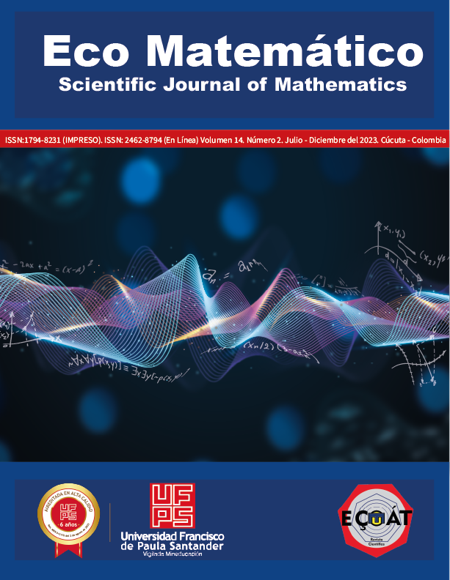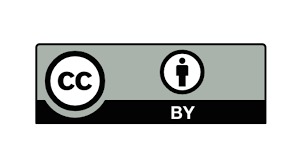Inclusive mathematic in blind students: an alarming reality
La matemática inclusiva en estudiantes ciegos: una realidad alarmante
Main Article Content
Currently, institutions are making major changes in the educational system due to the high percentage of boys and girls with disabilities who wish to enter classrooms, recognizing that the state, educational institutions, and the agents involved in the process must provide and contribute to it; being a social responsibility for the incorporation and/or inclusion of the population with limitations. This article is the result of a research which focuses on the teaching-learning of mathematics in students with visual limitations who attend the ninth and tenth grades of secondary Basic Education, at the Guaimaral Technical Institute of San José de Cúcuta, This being a subject with a high degree of complexity in this type of population, whose main objectives are to characterize the population with limitations, to know the needs that students with Special Educational Needs (SEN) have in the area of mathematics, how they develop in the learning process, the tools used, the agents that are part of it, the attitudes and aptitudes of the students. The methodology used had a qualitative approach using the interview, which was applied to students with visual disabilities, teachers and guardians through direct observation and field diaries as means for collecting information, which allowed through categories, subcategories, Referents and syntheses used in triangulation characterize the population with visual disabilities, the context in which they operate, the people who are part of the process, the attitudes and aptitudes of students with SEN in the educational process.
Downloads
Article Details
Asamblea Nacional Constituyente. (1991). Constitución Política de la República de Colombia 1991. https://www.funcionpublica.gov.co/eva/gestornormativo/norma.php?i=4125
Cano, R., & Casado, M. (2015). Escuela y familia. Dos pilares fundamentales para unas buenas prácticas de orientación educativa a través de las escuelas de padres. Revista Electrónica Interuniversitaria de Formación del Profesorado, 18(2), 15-28. DOI: https://doi.org/10.6018/reifop.18.2.224771
Congreso de la República de Colombia (1997, 07 de febrero). Ley 361 de 1997. Por la cual se establecen mecanismos de integración social de las personas con limitación y se dictan otras disposiciones. https://www.funcionpublica.gov.co/eva/gestornormativo/norma.php?i=343#:~:text=%2D%20El%20Estado%20garantizar%C3%A1%20y%20velar%C3%A1,%2C%20s%C3%ADquicas%2C%20sensoriales%20y%20sociales
Cowman, S. (1993) Triangulation: a means of reconciliation in nursing research. Journal of Acvanced Nursing, 18(5), 788-792. https://doi.org/10.1046/j.1365-2648.1993.18050788.x DOI: https://doi.org/10.1046/j.1365-2648.1993.18050788.x
Departamento Administrativo Nacional de Estadística. (2020, 30 de noviembre). Panorama general de la discapacidad en Colombia. DANE. https://www.dane.gov.co/files/investigaciones/discapacidad/Panorama-general-de-la-discapacidad-en-Colombia.pdf
D'Urzo, P. G. (2017). Integración del no vidente en la clase de matemática (Doctoral dissertation, Universidad Nacional de La Plata). http://sedici.unlp.edu.ar/bitstream/handle/10915/58805/Documento_completo.pdf?sequenc=1
Durán, M. M. (2012). El estudio de caso en la investigación cualitativa. Revista Nacional de Administración, 3(1), 121-134. DOI: https://doi.org/10.22458/rna.v3i1.477
Elizalde, A., Martí, M., & Martínez, F. A. (2006). Una revisión crítica del debate sobre las necesidades humanas desde el Enfoque Centrado en la Persona. Polis, Revista de la Universidad Bolivariana, 5(15), 1-18.
López, N., & Ruiz, C. M. (2017). Estrategias didácticas para la enseñanza y aprendizaje inclusivo de la Matemática de séptimo grado con estudiantes ciegos, INEP Matagalpa, segundo semestre 2016 (tesis de pregrado, Centroamericano SIIDCA-CSUCA). Repositorio SIIDCA-CSUCA. https://repositoriosiidca.csuca.org/Record/RepoUNANM4968
Martínez, L., & Martinotti, L. (2015). Estrategias para la enseñanza de matemática a alumnos ciegos o con baja visión. http://funes.uniandes.edu.co/17777/1/Martinez2015Estrategias.pdf
Mántica, A. M., Götte, M., & Dal Maso, M. (2014). La enseñanza de la matemática a alumnos ciegos y disminuidos visuales. El relato de una experiencia. http://funes.uniandes.edu.co/5660/1/ManticaEnse%C3%B1anzaALME2014.pdf
Ministerio de Educación Nacional. (2017, 29 de agosto). Decreto 1421 de 2017). Por el cual se reglamenta en el marco de la educación inclusiva la atención educativa a la población con discapacidad. http://es.presidencia.gov.co/normativa/normativa/DECRETO%201421%20DEL%2029%20DE%20AGOSTO%20DE%202017.pdf
Organización para la Cooperación y el Desarrollo Económico. (2015). Estudios económicos de la OCDE CHILE. OCDE. https://www.oecd.org/economy/surveys/Chile-2015-vision-general.pdf
Piñeiro, E. (2015). Observación participante una introducción. Revista San Gregorio, (Esp. 1), 80-89. https://revista.sangregorio.edu.ec/index.php/REVISTASANGREGORIO/article/viewFile/116/72
Rodríguez, Y M. (2020). Percepciones de los docentes frente a la inclusión en la educación de niños, niños y adolescentes en situación de discapacidad, de la institución educativa Juan Pablo I de la ciudad de Cúcuta (tesis de pregrado, Universidad Francisco de Paula Santander). Repositorio Institucional UFPS. http://alejandria.ufps.edu.co/descargas/tesis/1320061.pdf
Rodríguez, D. (2019). Observación no participante: características, ventajas y desventajas. https://www.lifeder.com/observacion-no-participante/
Roncancio, G. P., & Sáenz, C. (2016). Estrategias de enseñanza y aprendizaje para estudiantes con discapacidad visual (tesis de especialización, Universidad Piloto de Colombia). Repositorio SIIDCA-UPC. http://polux.unipiloto.edu.co:8080/00003332.pdf
Ruíz, P.M. (2010). El rol de la familia en la educación. Temas para la Educación. Revista para profesores de la enseñanza, (10). https://www.feandalucia.ccoo.es/docu/p5sd7489.pdf
Taylor, S. J., & Bogdan, R. (1987). Introducción a los métodos cualitativos de investigación. Páidos.







